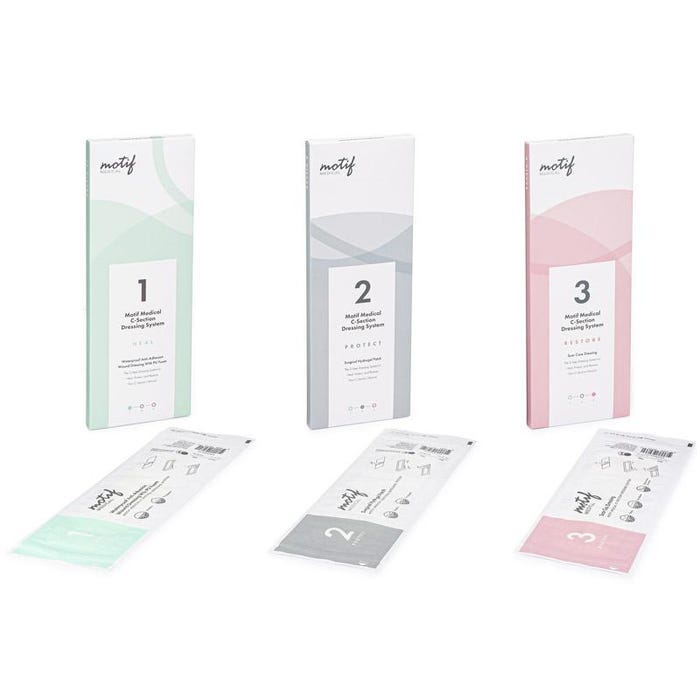Caesarean Sections are Not the “Easy Way Out”
Nearly a third of all births occur via cesarean section in the United States. Facing a c-section comes with unique challenges for both recovery and breastfeeding. Because cesarean delivery is sometimes stigmatized, we need to address a few important points right off the bat.
C-section moms are warriors who face the difficult scenario of major abdominal surgery for the health and well-being of the child inside of them. There is nothing easy about undergoing the process of cutting through skin, fascia, and uterine wall or having your abdominal muscles forcibly separated. There is nothing easy about the weeks-long recovery that involves pain with the simplest of movements and a lasting scar. No, cesarean sections aren’t the “easy way”, but for some moms, they are the only way.
Having a C-Section is GIVING BIRTH Just via a Different Method!
Giving birth is the act of bringing forth your offspring from your body. Just because your baby isn’t born through vaginal delivery does not mean you aren’t giving birth. A c-section mom lays down her own body to bring her baby into the world. This is most definitely an act of giving birth to the sweet, tiny human you will forever love.
Top Tips for Breastfeeding After a Cesarean Section Delivery
You can absolutely have a successful breastfeeding journey after a c-section!
While having a cesarean birth can present some challenges to breastfeeding, it doesn’t mean that breastfeeding isn’t going to work out. With some tips and strategies, you can reach your breastfeeding goals. Always remember that breastfeeding success doesn’t have to look a certain way
Learn about breastfeeding before birth
Take a breastfeeding class or meet with a Lactation Consultant to learn all about how the milk-making process works. Learning about things like breast milk supply and demand, latching techniques, positioning, skin-to-skin, and more will take some of the pressure off once your baby arrives. It will also boost your confidence during your breastfeeding experience and your ability to feed your baby should any obstacles arise.
Practice skin-to-skin contact as soon as possible after birth
Skin-to-skin is not just for bonding! Placing your baby on your chest skin-to-skin helps regulate the baby’s temperature, heart rate, stress response, and respirations and also helps initiate breastfeeding. This type of close contact helps get the baby’s feeding instincts activated and boosts your oxytocin (the hormone that triggers breast milk letdown) levels. If you’re having a scheduled c-section, ask your healthcare provider about doing immediate skin-to-skin as long as both you and baby are stable. It is even possible in the operating room to set up the initiation of breastfeeding within the first hour while the surgery wraps up!
If skin-to-skin doesn’t happen right away, implement it as soon as possible. It’s still valuable even if it doesn’t happen in the first few hours postpartum. Skin-to-skin provides great benefits for both you and your baby throughout infancy.
Try breastfeeding positions that don’t put pressure on your incision
It’s ok to breastfeed in whatever is the most comfortable position for you! Moms often find the football hold or laid-back position to be comfortable after surgery. Placing a pillow across your incision before trying the cradle or cross-cradle holds can be helpful as well. Side-lying is another option that allows you to rest your neck and shoulder muscles while nursing. No matter the position, make sure that the baby’s body is turned toward yours with their ears, shoulders, and hips in alignment. Baby should not have to turn their head to get to the breast. Align your nipple with the baby’s nose and allow their head to tilt back for a wide latch. Aim your nipple slightly toward the roof of the baby’s mouth rather than straight in. This helps bring the baby’s chin to the breast first for a deep, asymmetrical latch……just what we want!
Manage your post-surgical pain
Pain after a cesarean section delivery can make it more difficult to breastfeed. Many women find that non-opioid painkillers, such as acetaminophen and ibuprofen, cover their pain adequately. If breakthrough pain appears, stronger drugs are always an option. Ice Packs are a great option even after hospital discharge. Nursing staff can also provide you with an ice pack to help reduce inflammation and pain at the incision site.


Pump or hand express for any missed nursing sessions
Hand expression is also essential if you are separated from the baby or if the baby isn’t latching and nursing effectively. Hand expression is the ideal way to remove colostrum in the first 48 hours after birth since colostrum is often very thick, and sticky, and comes in small amounts. Pumping after hand expression helps to stimulate the breast for healthy milk production. Remember that pumping is placing the order for future milk production even if you’re not seeing a lot of output in the beginning.
Avoid bottles and pacifiers
Early introduction of artificial nipples can interfere with breastfeeding. Ideally, it’s best to wait until you and your baby are confident with breastfeeding before introducing bottles and pacifiers. If the baby has a medical need for supplementation, expressed breast milk (using hand expression or a breast pump) is the first choice, donor milk is next, and formula is an acceptable substitute. Supplements can be given via cup, spoon, syringe, or dropper. Medical indications for supplementation include hypoglycemia, jaundice, weight loss greater than 10% of birth weight in the first week, and dehydration. If bottles are used, Paced Bottle Feeding is an important technique that helps prevent overfeeding and makes it easier for the baby to go from the bottle back to the breast.
Focus on learning to breastfeed and recovering from birth
Learning to breastfeed and recovering after a c-section is MORE than a full-time job. Enlist help with household tasks whenever possible. If possible, allow your partner to take care of all other baby care duties so you can focus on feeding your baby.
Give yourself grace during this time. It’s ok if you stay in your pajamas all day or if the house is a little messier than usual!
Your to-do list should only have two items - rest and breastfeeding! Motif’s C-Section Dressing System helps protect your incision, promotes healing, and aids in scar prevention which are all important parts of recovery. Additionally, Motif’s Postpartum Recovery Garment helps stabilize your core after surgery and also helps reduce swelling. Many healthcare providers recommend support garments to make recovery faster and easier.
Reach Out to an IBCLC for help!
An IBCLC (International Board Certified Lactation Consultant) can help navigate milk supply concerns, latch issues, nipple and breast pain, flange sizing, pumping, and more. If you encounter any obstacles in your breastfeeding journey, it’s best to reach out as soon as possible so an IBCLC can help you make a plan to get feeding back on track and moving toward your goals with expert breastfeeding support.
Information provided in blogs should not be used as a substitute for medical care or consultation.








